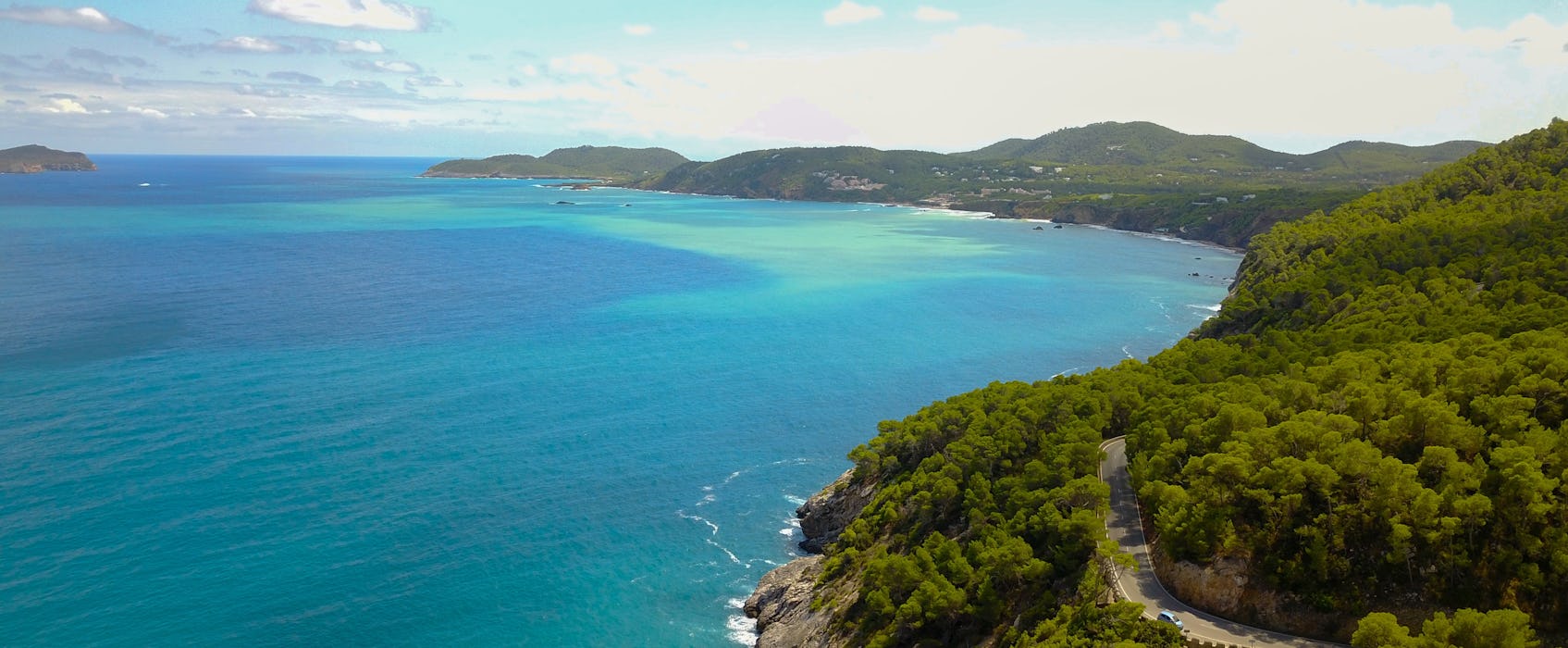Let us help you plan the perfect sailing trip
Provide your travel details, receive free offer and enjoy your holiday!
One of Spain's most popular destinations, the Balearic Islands, is a stunning archipelago located in the western Mediterranean Sea, near the eastern coast of the Iberian Peninsula.
There are four large islands in the archipelago: Mallorca, Menorca, Ibiza, and Formentera, with several smaller islands and islets scattered around the bigger islands. These are actual Mediterranean islands with plenty of sunshine and warm weather almost year-round.
The combination of mild Mediterranean climate, beautiful coastline and plenty of trendy resorts make these islands a coveted summer destination.
Ibiza, in particular, has the reputation of an international party destination, attracting many of the world's most popular DJs to its nightclubs and organising world-renowned music festivals.
The complete vacation package
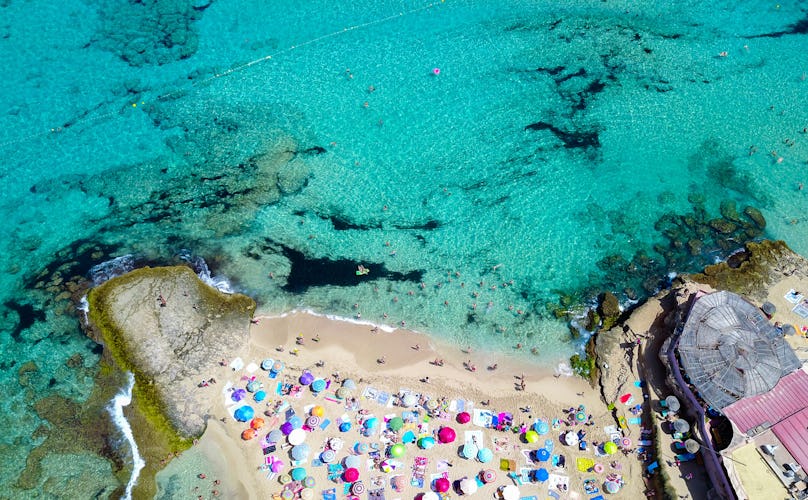
The Balearic Islands are an autonomous community and a province of Spain, with Palma de Mallorca acting as the regional capital.
The archipelago lies east of the Spanish mainland, about 80 kilometres from the mainland at its closest part. You will find two groups of islands: the eastern and more prominent group forms the Balearics and includes the principal islands of Mallorca and Menorca with the smaller island of Cabrera. The western group, known as the Pitiusas, includes the islands of Ibiza and Formentera.
Although most known for the party scene, the Balearic Islands offer much more than that: here, you can enjoy a peaceful holiday far away from the crowds, explore the natural beauty of the archipelago and dive in the most inviting sea.
Menorca and Formentera, two small corners of paradise in the Mediterranean, are especially appealing to those that wish to enjoy some tranquillity away from the crowds and loud parties.
On the other hand, Mallorca and Ibiza are bursting with life, with an endless stream of nightclubs, beach bars and restaurants everywhere you look. There is still natural beauty here, especially away from the towns and resorts. Some of the main natural attractions in Mallorca include the Cabrera National Park and the mountains of the Sierra de Tramontana.
Maybe surprisingly, Ibiza has been declared a World Heritage site by UNESCO for its rich biodiversity and cultural attractions. Despite being a world-famous party destination, the island is also home to landmarks such as the Phoenician archaeological site of Sa Caleta, the necropolis of Puig des Molins and the historic centre of Eivissa.
Therefore, Ibiza is somewhat of a perfect vacation package - a stunning coastline with beautiful beaches, impressive historical and cultural landmarks and, of course, ad exhilarating nightlife, where the music beat can be heard all night long.
A closer look at each island
Mallorca
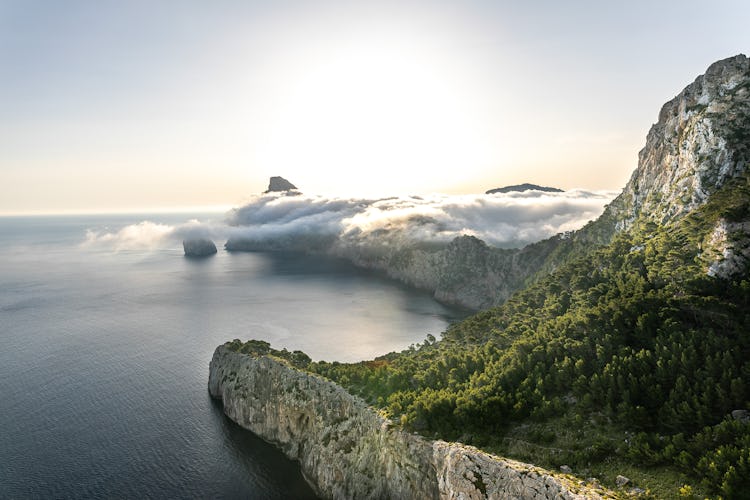
The largest island in the Balearic archipelago, Mallorca (also known as the 'Isle of Dreams'), offers a varied landscape consisting of mountains and valleys, rocky coves and sandy beaches. The island's most prominent feature is the Sierra del Norte, a mountain range running along the northern coast. The island's vegetation consists mainly of pine, olive and almond trees, making the countryside a visual delight and spreading intoxicating smells across the island.
But the most alluring part of the island is its coastline, where you will find stunning beaches, secluded coves and the beautiful turquoise Mediterranean Sea.
No visit to Mallorca is complete without stopping at the capital of Palma de Mallorca. A vibrant and colourful city, Palma offers beautiful landmarks like the Cathedral of Santa Maria of Palma, Bellver Castle and the Es Baluard and Joan Miro museums.
Strolling through the city streets, you will enjoy numerous restaurants, exclusive boutiques and shops, and the beautiful waterfront filled with cafes.
Moving away from big cities, you will find quaint villages across Mallorca like Valldemosa or Soller, where you can unwind and forget about the outside world. Other options include Deia and the stunning gardens of Son Marroig, Pollenca along with its lively port, or Alcúdia and its unspoilt coves.
Menorca
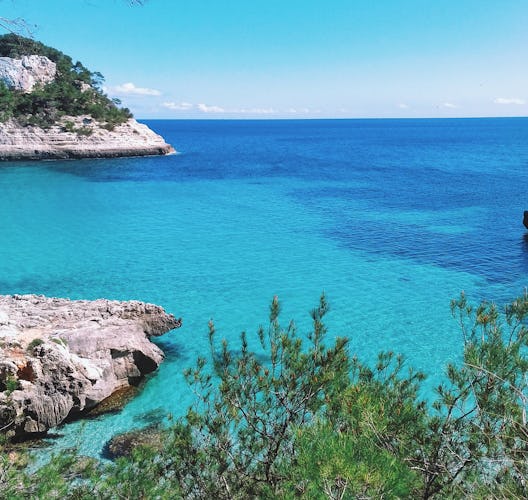
Sitting just east of Mallorca, Menorca is the second-largest island in the Balearic archipelago. Like with Mallorca, here you will find one of the most stunning coastal regions in all of Spain: there are more than 200 kilometres of highly diverse coastline on Menorca.
You will find rugged shores with cliffs to the north, while the southern coast boasts beautiful golden sandy beaches.
Both the capital Mahon and the historic city of Ciutadella are positioned at the ends of deep inlets offering plenty of natural protection to its harbours.
The beautiful coastline of Menorca, mainly consisting of broad sandy beaches or small coves surrounded by pine groves, presents an ideal setting for a typical summer vacation. Crystal clear waters and a stunning sea bed make Menorca one of the favourites among diving enthusiasts. Sailing, windsurfing and water skiing are all trendy activities on Menorca.
Menorca also has a rich archaeological and cultural heritage. Those looking to explore the island's cultural side should visit sites like the old town of Ciudadela and the prehistoric remains at the Naveta des Tudons Megalithic site.
Ibiza
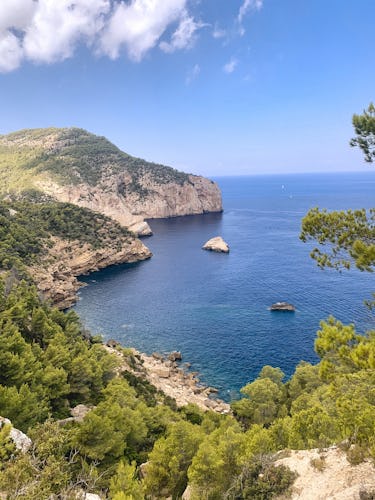
Even though it is mainly known as one of Europe's most popular party destination, Ibiza offers much more than just nightclubs and beach parties. The island is a typical Mediterranean destination, with beautiful stretches of coast, pristine nature reserves and charming coastal towns.
Despite its relatively small size, Ibiza is packed with all kinds of attractions and landmarks.
The capital city of Eivissa (Ibiza Town) overlooks the Mediterranean Sea, boasting a walled fortress and a labyrinth of charming cobblestone streets. The Dalt Vila area of town sits perched above the waterfront, populated with world-class restaurants and colourful bars, providing entertainment all through the night. While visiting Ibiza Town, be sure to check out the Our Lady of the Snows Cathedral, offering perhaps the best views in the entire town.
Hiding behind the glamour and noise of Ibiza's clubs and beach bars is the unique natural environment housing some truly spectacular landscapes. Locations like Benimussa Valley or the El Pla de Corona plains are the epitome of rural charm.
The countryside is full of traditional country houses situated beside lush olive groves and vineyards.
Another interesting natural attraction you can visit on Ibiza is the Ses Salines Natural Park. The salt fields and marshes occupy the southern shores of Ibiza and continue across the northern end of Formentera.
This unique maritime area houses many animal and plant species and has earned the island its place on the World Heritage Biodiversity list.
When it comes to cultural landmarks on Ibiza, they are mainly concentrated near the capital of Eivissa. Dalt Vila, towering above the capital city, is considered the best-preserved coastal fortress on the Mediterranean. Other landmarks include Sa Caleta, the Phoenician settlement, and Puig des Molins' necropolis, all included on the UNESCO World Heritage list alongside Dalt Vila.
Formentera
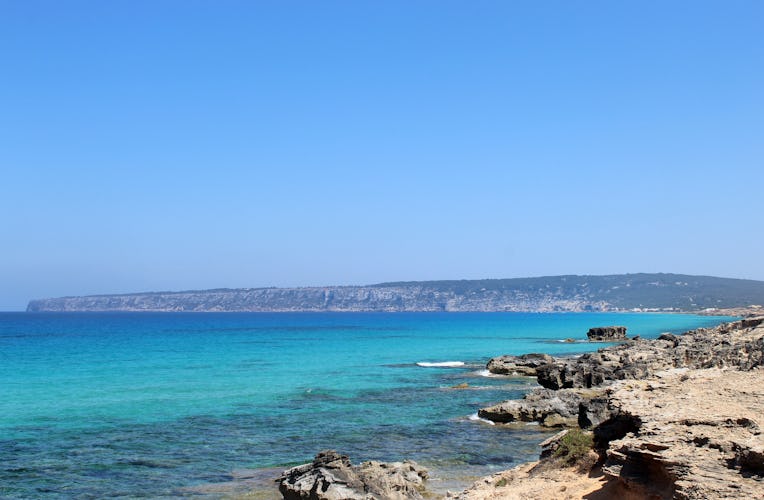
Just south of Ibiza, separated by a narrow channel, lies the island of Formentera - the smallest island in the Balearic archipelago.
Although this beautiful island is far from a well-kept secret, it is still much less visited than its neighbouring island of Ibiza.
Therefore, Formentera can afford to retain its laid back and relaxed vibe, with much fewer crowds and far less noise.
Strolling across this small island, you will come across cute souvenir shops, charming restaurants and, more importantly - some of the prettiest beaches in this part of Spain.
Here you'll find secluded coves, such as Calo d'Es Morts and Cala Saona or some of the bigger beaches like Ses Illetes and Es Migjorn. Wherever you end up, you will find stretches of fine white sands, pristine turquoise waters and a sense of tranquillity that will wash over you as soon as your toes touch the sand.
The seabed surrounding the island is also quite spectacular, making Formentera one of the top diving destinations in Spain. There are several diving centres on the island ready to teach you and show you this magical underwater world.
As you dive underwater, you will be met with a multitude of rock formations, a rich and diverse sea life, as well as the Don Pedro, a 140-meter long cargo ship - the largest preserved shipwreck in the whole Mediterranean.
The urban life on Formentera is somewhat scaled back: there are six settlements on Formentera, with the capital of Sant Frances the centre of island life.
You will find traditional Mediterranean houses everywhere: simple, functional, and always painted white; these buildings add to the island's charm.
La Savina is the principal port of the island, which can get quite crowded during the summer.
The best way to explore the island is to visit one of its lighthouses, where you can take in spectacular vistas.
The two most popular lighthouses are the Cap de Barbaria and the La Mola lighthouse, located on the island's highest point, offering the best view of the area.
How's the weather on the Balearic Islands?
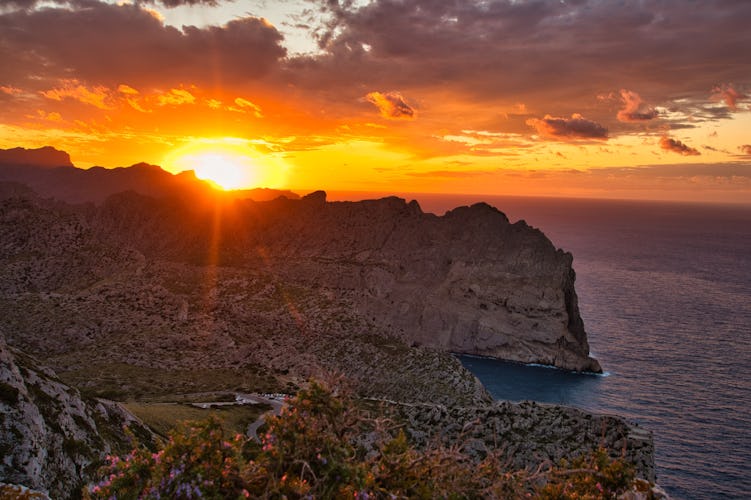
As you would suspect, the Balearic Islands enjoy a very mild Mediterranean climate, with warm temperatures and fair weather lasting almost year-round.
Summers can get quite hot, with temperatures soaring past 30 °C regularly. However, unlike Andalusia or other parts of Spain, the heat is never too unbearable here thanks to frequent sea breezes, making it an even more attractive summer destination.
The rest of the year, including winter, sees fair weather with mild temperatures, ideal for hiking and exploring the archipelago.
You can expect some rainfall in the autumn, winter and spring, which can often be heavy but usually short-lived.
The sea temperatures are relatively similar across the archipelago: the sea is warm enough for swimming from mid-June to September. The sea is warmest in August when average temperatures reach 26 °C.
Best time to visit
For those looking for guaranteed hot and dry weather, the best time to visit the Balearic Islands is during the summer when temperatures average between 26 °C and 31 °C, and there is little to no rainfall.
The rest of the year sees lower temperatures and some more rainfall but still offers plenty of sunny days for you to enjoy the islands. Winter may be ideal for those looking to get away from the snow and the cold and soak up some sunshine.
Balearic beaches
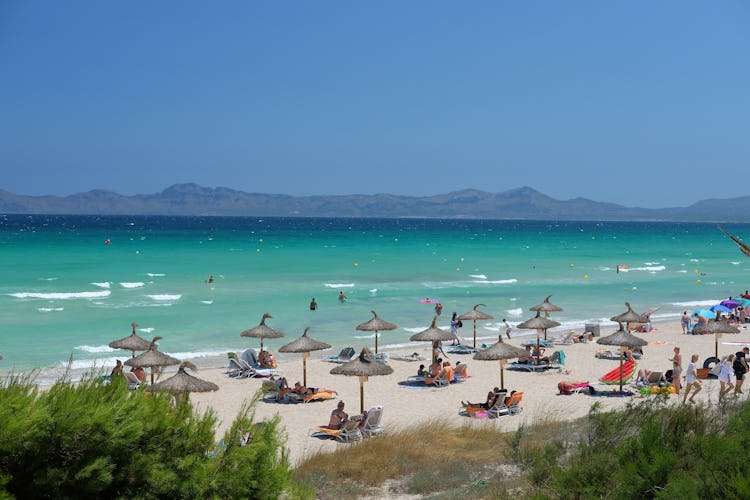
One of the most distinctive features of the Balearic Islands is its beaches. There are more than 375 designated beaches across the archipelago, ranging from regulated city and resort beaches with extensive facilities to small, secluded coves where one can be alone and away from the outside world.
Whichever island you end up on, you will be met with soft, sandy beaches and the most inviting turquoise sea.
Almost all beaches here have glorious scenery and an abundance of beach bars and clubs that extend the good times long into the night.
Don't miss
- Mallorca: PLAYA MURO
Stretching for over 6 kilometres, Playa Muro is one of the longest beaches on Mallorca. Here you will find proper Caribbean vibes as the endless soft white sand touches the warm and turquoise waters. The beach is bustling with life near the popular resort of Alcudia but gets progressively more quiet as you move further away.
- Menorca: CALA MACARELLETA
On Menorca, you will find blissful bays and secluded coves with lots of charm. The twin bays of Macarella and Macarelleta, squeezed in between pine-covered cliffs, are arguably the prettiest spots on the island.
- Ibiza: LAS SALINAS
Las Salinas is Ibiza's most iconic beach - endless soft sand, stunning blue waters, and the unavoidable beach bars is what this beach is all about. Blending with the tall trees of the surrounding nature reserve, Las Salinas is the best place to spend a summer's day on Ibiza.
- Formentera: SES ILLETES, FORMENTERA
Crystal clear waters and white sands characterise the Ses Illetes beach. This increasingly popular destination can get quite crowded during the summer due to several lines that bring visitors from Ibiza to its pristine lagoons.
Active vacation all day & all night
Leisure & Recreation
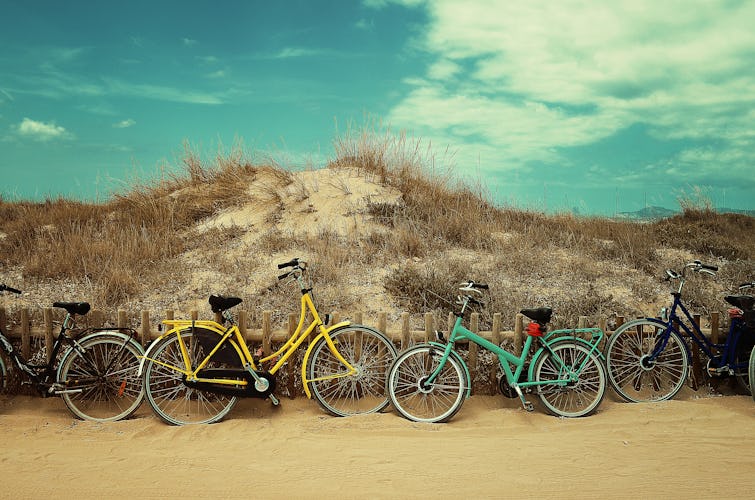
In addition to its world-renowned party scene, the Balearic Islands also offer all sorts of sports activities, making it a vibrant destination for all hours of the day. Across the islands, you will find riding schools, tennis clubs, go-kart tracks, golf courses, athletics clubs and much more.
Cycling is prevalent on the islands, and there are many easy to follow routes of varying difficulty across the interior and coast. It is the perfect way to explore the islands, where one can take in the views and the smells of the countryside without any obstructions.
As you move away from land and into the water, the water-sport possibilities are aplenty: snorkelling, scuba diving, and windsurfing are among the most popular activities to do in the Balearic Islands.
The stunning sea bed and rich sea life make any interaction with this aspect of the Balearic Islands truly an experience to remember.
Nightlife

As the night sets on the Balearic islands, the whole archipelago comes to life. The islands of Ibiza and Mallorca especially are overrun by eager party-goers each summer, searching for the perfect beach party.
Palma de Mallorca and Ibiza Town are the two main party destinations, but events are held all over the islands, usually in some pretty spectacular locations.
In Palma de Mallorca, Calle Apuntadores is the place to go bar-hopping. You will find dozens of trendy bars here, packed each night with both locals and visitors.
The historic town of Ciutadella on Menorca is also famous for its bar scene, where you will find several places buzzing each night, entertaining its guests long into the night.
If you find yourself on Ibiza, an excellent place to explore the bar scene is the island's second-largest city of Santa Eulalia:
There is a selection of lively bars and smaller clubs ideal for warming up before heading off to one of the more prominent nightclubs on the island.
Speaking of nightclubs, the party central is located on Ibiza with three main party areas spread across the island. There is no wrong choice here: anywhere you end up is bound to be filled with party-goers, loud music, and many cocktails.
However, Ibiza Town is still the epicentre of nightlife on the island, where one can meet up with people from all over the world looking for a good time. The whole town, especially the town centre, explodes with life late at night. Additionally, just south of the town centre, you will find the Playa d'en Bossa area, boasting a lively beach club scene.
Another place worth visiting if you are looking to party is Sant Antoni de Portmany, located on the island's west coast. Here you will find a bit more subdued party scene than the Ibiza Town scene, but one that still offers an exciting nightlife along with several larger clubs that have helped put Ibiza on the map.
Let us help you plan the perfect sailing trip
Provide your travel details, receive free offer and enjoy your holiday!
